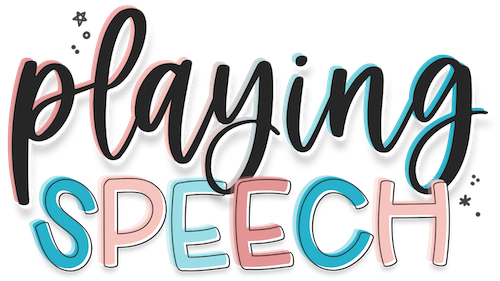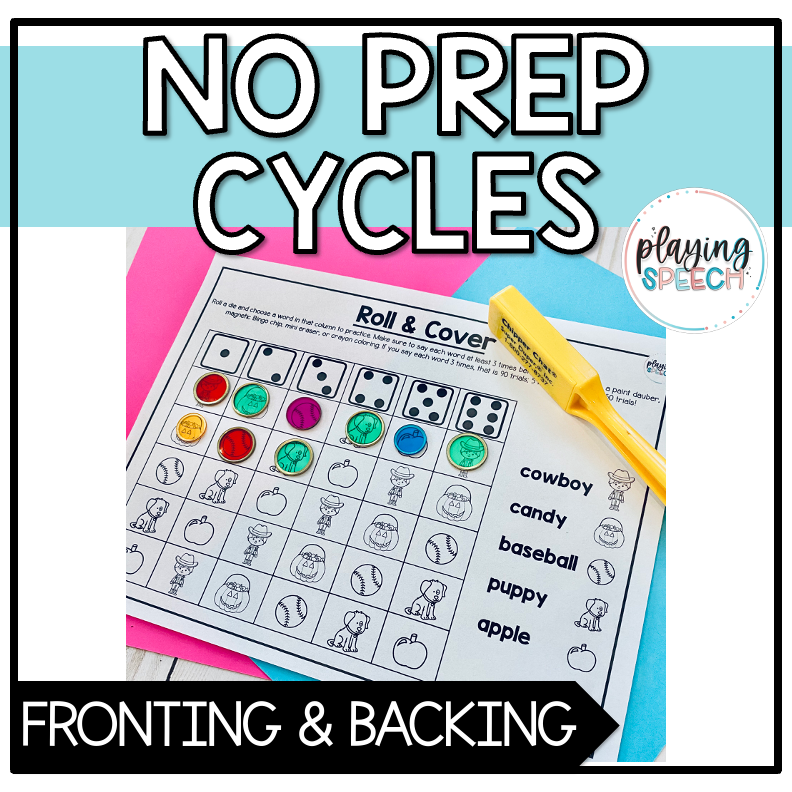How to Elicit the K Sound in Speech Therapy
I work mostly with preschoolers with speech sound disorders. The /k/ sound used to be my least favorite sound to elicit..other than the R sound, am I right?? But over the years it has now become my FAVORITE sound to get a child to say!
Why? I’m not sure. I think there is just something so satisfying about getting this sound. And the contrast between /t/ and /k/ - if the child is fronting - is just so significant that the correction is very noticeable and makes a big impact on speech intelligibility!
So I’m here to give you a step-by-step guide for how I elicit the /k/ sound in speech therapy and then quickly put it into words. Disclaimer: This works very, very often with my clients. However, there is always going to be that one client that it doesn’t work with. Start here though, and see if it works!
Step 1: Start with a velar fricative or coughing sound
So the first thing I do is try to get any approximation of a /k/ sound. I do this by trying to elicit a velar fricative sound or a light cough sound. I don’t even talk about what specific sound we are working on yet, I just get the child to copy my velar fricative or my “cough”. Sometimes I break out my Bjorem Speech Sound Cue Cards and talk about a “coughing camel” sound and show them the visual to go with it. I am not really looking for this sound to be a true /k/ sound, but just trying to stimulate an approximation and get the tongue into a better position for /k/.
Step 2: Add a vowel ASAP
Once you get close to a /k/ sound, then I add a vowel BEFORE the /k/ sound ASAP. So I put /k/ in the final position of a syllable (and then quickly into a word, keep reading to see how). I like to start with aaaaa-k (as in the end of “back”). Why? The ae vowel is a low vowel, which in my opinion, keeps the tongue tip far from the alveolar ridge where a child is likely to go if he is a fronting the /k/ sound. I also like the way you can exaggerate the huge, open mouth for “aaaa” and then freeze the mouth open to give the child time to produce the /k/ accurately. In the beginning, you will likely get the vowel plus an approximation of /k/ (like the cough or velar fricative). But I have found that this very easily shapes into an actual /k/ sound with very little direct teaching.
Step 3: Get a single true word!
So now that we have a good “aaaa-k”, I immediately put that syllable in the word “back!” It should be an easy transition because the initial /b/ is a simple sound and won’t impact your final /k/ production. Once they can do it, I have the child get HIGH repetitions of the word “back.” I’m talking like 100 or more. I want to make this motor movement automatic. This usually doesn’t take more than one session - sometimes even just a portion of a session. **I also like using the word “back” because there is a nice minimal pair (“bat”) that would go with it if that’s the approach I’m going to be taking with my client. And let’s be honest, about 90% of the time, when I’m working on the /k/ sound, the child is a fronter and I will be most likely using a minimal pairs approach. My favorite minimal pair cards for fronting are linked here.
Step 4: Add more words to your word list
Once “back” is coming out consistently and with little effort, I add more words to our practice list. I choose words with facilitative contexts at first. I like words like “bike” and “ache” and “pack” because of their low vowels and simple (or absent) initial consonants. I also like that they have minimal pair words with the /t/ sound if I am going to use that approach (bite, ate/eight, pat). When a child is getting good with these types of words (either by themselves or in minimal pairs), I add in more complex targets like “take” and “like.” Why are these words more complex? Because the first sounds (/t/ and /l/) are made in the same place where the errored sound is likely being made (i.e. if the child is fronting the /k/ sound and making it a /t/). But the vowel is still low, so this helps with the transition from the alveolar sound to the /k/.
Step 5: Try other positions in words
Once you have a solid final /k/ established, you can try to put the /k/ sound in medial and initial position. I find coarticulation is helpful - like saying “backkk-key” and then fading out the “back.” However, a lot of my students, once they have the motor movement for the /k/ sound down, can easily put it in initial position with a little concentration and patience. From there, I just keep gradually increasing the complexity of the targets and get high repetitions.
Some random tips:
If the child can not get the /k/ sound on their own (or the velar fricative or cough), use something to depress and HOLD the tongue tip down. I have used my own gloved finger and trained the child how to use their own finger to hold down the tip. Then we fade the finger as a cue (this could be an entire blog post in and of itself).
I have found that if a child is not ready for this sound, they just are not ready! You may have to put /k/ on the back burner for a while and come back to it.
Maybe /g/ is easier than /k/? I always like to work on the voiceless cognate first, but that’s not to say that’s the best way for every child. Play around with it and see what is easier for the child in front of you!
Sometimes, if a child gets good at final /k/, I’ll move on from the sound and not target it specifically in other positions. I may be able to spend my valuable therapy time elsewhere as this /k/ sound is technically now emerging in the child’s speech. But again, this is a case-by-case basis and also depends on the overall approach you are using with the child.
You’ve got this!
So that’s my step-by-step guide for how I elicit the /k/ sound in a child’s speech. This is usually the way I go about it, but I always like to point out that every child is different. Please send me an e-mail with any questions or tips of your own! I love to chat speech sound disorders!
Some K sound resources!
Click the photos below to be brought directly to the resources!





